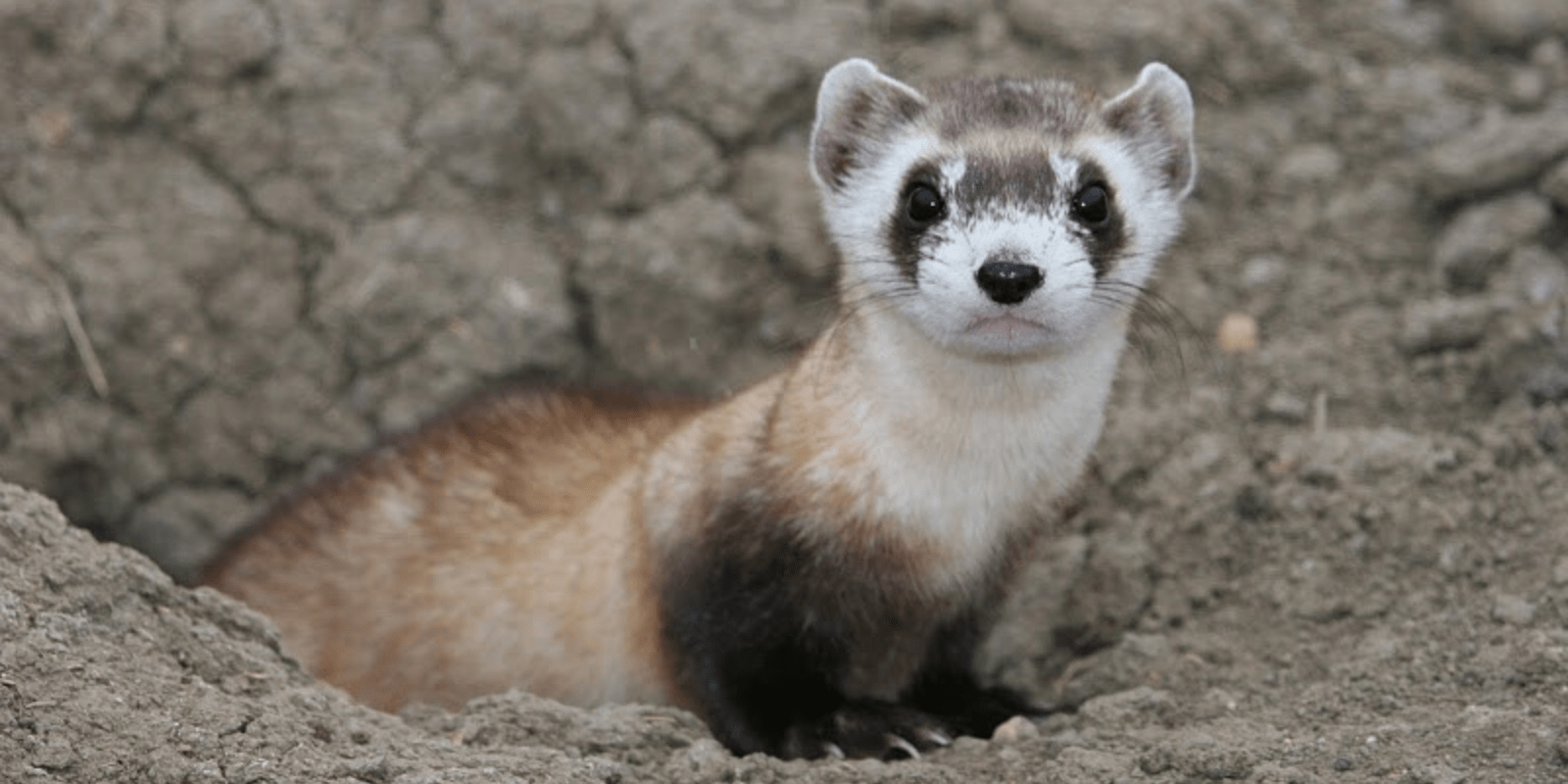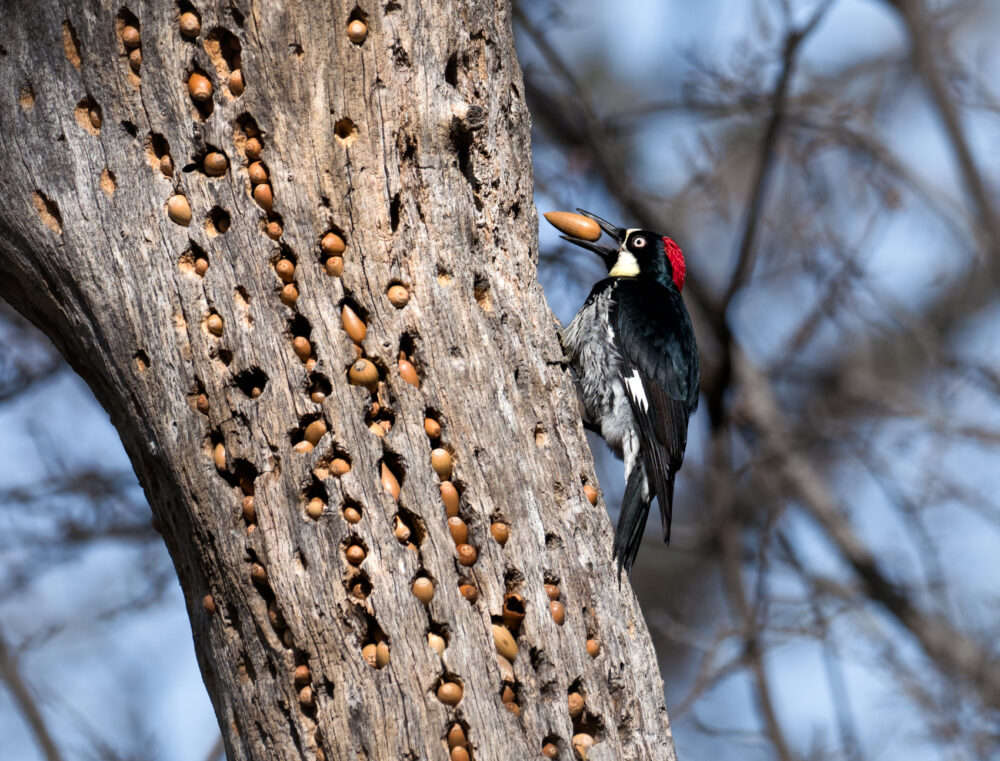We have much more to do and your continued support is needed now more than ever.
Tribal Wildlife Conservation: 5 Success Stories

Did you know: Tribes own or influence the management of tens of millions of acres of land? Tribal lands provide vital habitat for more than 525 federally-listed threatened and endangered plants and animals, many of which are both biologically and culturally significant to Tribes. And Tribes’ history of success would be sustained, strengthened and expanded with an investment of resources from the Recovering America’s Wildlife Act.
Here are just a few of the countless stories that exemplify excellent Tribal fish and wildlife resource management.
Saving the Black-Footed Ferret
The Lower Brule Sioux Tribe of South Dakota has a long track record of restoring native species to its Tribal lands. Perhaps the most notable effort has been the restoration of black-footed ferrets. Ferrets were first released in 2006 and a population was quickly established. Since becoming involved in ferret recovery, the Tribe has been a leader in several aspects of ferret recovery.
The Tribe was the first to request and receive a scientific recovery permit for the reintroduction of ferrets, which has since been used by other Tribal, federal, and private land sites. The Tribe has drafted and implemented a management plan for black-footed ferrets and designated ferrets as a priority species in the Tribe’s multi-year Wildlife Conservation Plan for its Tribal lands.
When plague outbreaks created serious challenges to the Tribe’s ferret recovery program, the Tribe stepped up and became the only Tribal partner in a study that occurred across 7 western states that tested an experimental plague vaccine that one day might prevent plague outbreaks from occurring.
Connecting Habitat for Painted Turtles & Grizzlies
Based in Montana, the Confederated Salish and Kootenai Tribes (CSKT) led and directed efforts to achieve wildlife and wetland mitigation on the reconstruction of the main highway route through the center of the Reservation, resulting in the construction of 43 wildlife underpass crossing structures and one large overpass named “The Animal’s Bridge” on U.S. Highway 93. These state-of-the art wildlife crossings provide critical wildlife habitat connectivity and improve public/wildlife safety by reducing the risk of vehicle collisions with crossing animals. From painted turtles to grizzly bears, nearly every type of four legged animal found on the Reservation, and even some birds, utilize these highway crossings, and they have become a model highway design across the country.
Restoring Habitat for Carolina Flying Squirrels
The Eastern Band of Cherokee Indians (EBCI) Natural Resources Department is working to build upon generations of Cherokee stewardship and manage terrestrial and aquatic species of concern through an EBCI Wildlife Action Plan. Modern-day Cherokee lands located in the southern Appalachians harbor tremendous biodiversity and rare species that receive focused population monitoring and habitat protection efforts from EBCI biologists. These species include three ESA listed bat species, the federally endangered Carolina northern flying-squirrel, the eastern elk, and many neo-tropical birds and salamanders. The EBCI is also successfully working with multiple government and non-profit partners to restore native aquatic species to EBCI watersheds such as the eastern hellbender, sickleelfin redhorse, and multiple freshwater mussels. Sustained wildlife conservation efforts within the EBCI lands are critical to preserving ecosystem services, economic resources, and cultural values for future generations.
Mountain Lions, Wolverines, Bears, Oh My!
The Shoshone and Arapaho Fish and Game Department has been actively and successfully conserving fish and wildlife on the Wind River Reservation since the implementation of a “Game Code” in 1984. Wind River, encompassing over 2.2 million acres in west-central Wyoming, is an important part of the Greater Yellowstone Ecosystem. Prior to the implementation of the Game Code, unregulated hunting resulted in severely depleted populations of large game including pronghorn antelope, mule deer, elk, moose and bighorn sheep. Because of the vast expanse of high quality habitat, ungulate populations rebounded upwards of 500 to 1000% once hunting seasons and harvest quotas were implemented and enforced. Commensurately, large ungulate populations now support a large and robust contingent of medium and large carnivores including wolverines, bobcats, coyotes, mountain lions, wolves, black bears and grizzly bears.
In addition to these successes, the Department has partnered with the US Fish & Wildlife Service, Wyoming Game and Fish, University of Wyoming, The Nature Conservancy, and others on a variety of GPS collaring studies to investigate the survival, movements and migration patterns of bighorn sheep, mule deer, elk, wolves, and grizzly bears located on Wind River. Information from these studies will further knowledge that leads to continued sustainability of fish and wildlife on Wind River for Tribal and non-tribal members alike.
Recovering Walleye: A Win for an Ecosystem & Heritage
The Red Lake Band of Chippewa, located in north-central Minnesota, governs most of Red Lake, its namesake. Walleye fishing in the lake is at the heart of the Band’s heritage and economy. When the lake’s walleye population collapsed, the Band took swift action. In 1997, the Band decided to stop fishing in its part of the lake. That was not enough. In 1999, the Band partnered with the state of Minnesota to ban all fishing on Red Lake. The Band then worked with the state, the Bureau of Indian Affairs, and the University of Minnesota to implement a recovery plan. The walleye rebounded in only seven years – way ahead of schedule.
Despite a history of underfunding, Tribes have some of the most accomplished natural resource programs in the nation and protect hundreds upon hundreds of wildlife species and their habitat. That’s why the bipartisan Recovering America’s Wildlife Act will direct $97.5 million to Tribal-led wildlife conservation efforts. With the support of this legislation, the Tribes stand ready to ensure that wildlife endures for future generations of Native Americans, and all Americans.
The Recovering America’s Wildlife Act funding will help Tribes to:
- Manage wildlife and habitat on their lands as well as collaborate across jurisdictions (e.g., with states, private landowners, etc.) to protect migrating wildlife.
- Assist in the recovery of threatened and endangered species.
- Ensure that tribes have the staff capacity to do all they can do to protect wildlife.
But we need your help to pass this vital legislation. Without the Recovering America’s Wildlife Act, we won’t be able to remedy past inequity in conservation funding for Tribes. Remind Congress that Tribes play a leadership role in recovering America’s fish, wildlife and flora by sending them a message in favor of the Recovering America’s Wildlife Act today:
TAKE ACTION





















